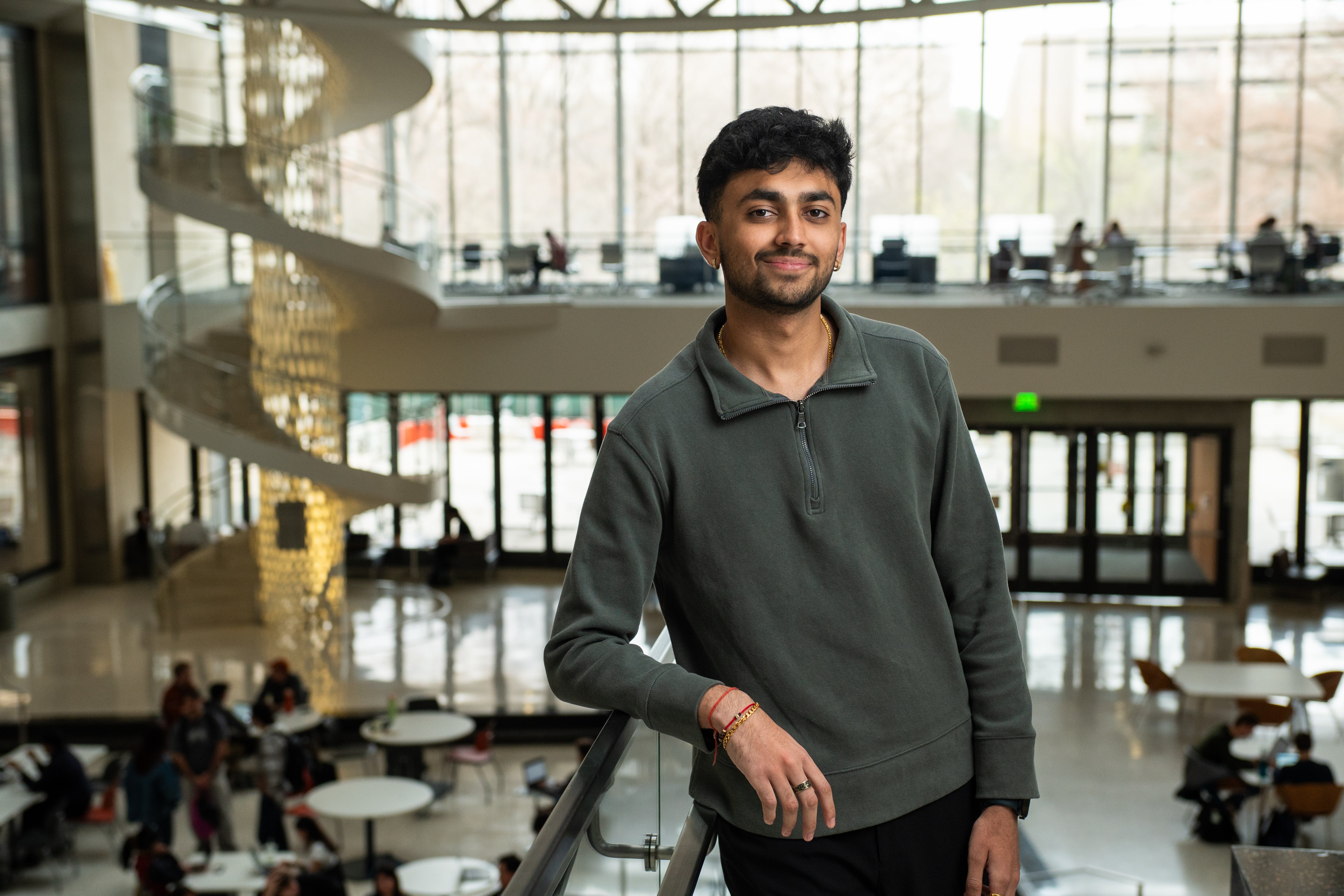College-Wide Focus on Increasing Student Success Brings Significant Pay-Off
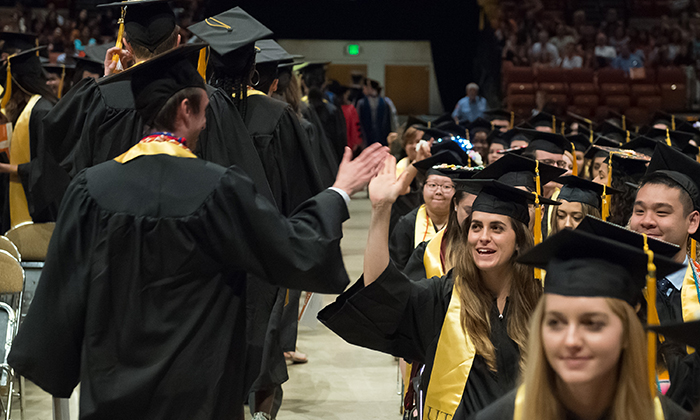
When Samantha Pliego started her freshman year at the University of Texas at Austin in the College of Natural Sciences, things went well. Mostly.
"I did struggle in that first biology class," said Pliego, who is now a sophomore.
Pliego certainly wasn't the first freshman science student to experience doubts about their major in a foundational science class. Freshman- and sophomore-level classes in biology, chemistry and calculus have a notorious reputation on many university campuses. They are known for weeding out students, sometimes at alarming rates. In fact, some research indicates that these foundational courses are a significant factor in a nationwide challenge with retaining talented students in STEM degree paths.
"I tell students all the time that learning science isn't complicated. It's just hard," said David Vanden Bout, associate dean for undergraduate education at the College of Natural Sciences. "Students need to realize that there's no secret: it's just hard work. But that's very difficult to do if you feel like it's impossible. Creating a structure where students feel like they are supported and can be successful, where they know what to do if they bomb a test and how to get help and turn it around, I think it's the most important thing."
Over the past five years, the College of Natural Sciences took a variety of steps to create precisely the structure Vanden Bout describes, through a mixture of new approaches and doubling down on promising earlier initiatives. Back in 2013, two years after the University began a new initiative focused on graduation rates, early stumbles were causing high numbers of students who started in the College of Natural Sciences to either change majors or leave the university entirely, sometimes after failing out.
In the half-decade since, however, the turnaround has been dramatic. Almost no college on campus has had as significant a spike in the four-year graduation rate as Natural Sciences. The rate that students quit, fail or drop freshman chemistry, biology or calculus has plummeted by more than two-thirds. And the gains have been particularly dramatic for students underrepresented in the sciences, students from economically disadvantaged homes and students who are the first in their families to go to college.
Update: Since this article was written, more data on continuing improvements in graduation rates has become available. For the students who entered the College of Natural Sciences in 2016, 74.4% graduated with four years.
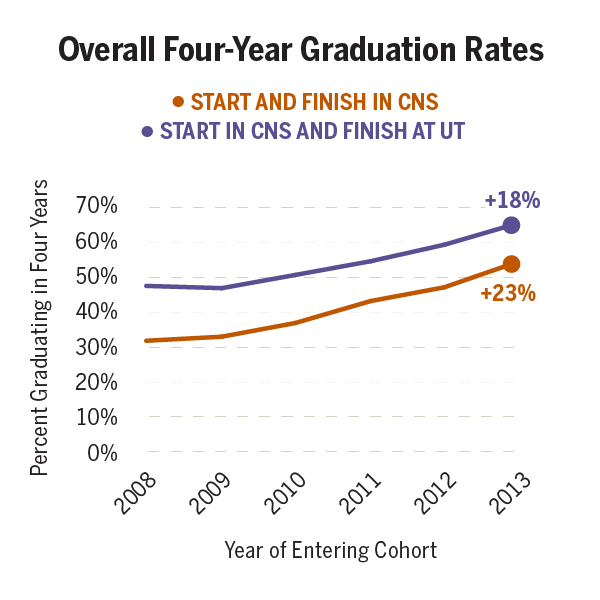
Even those who entered UT with SAT scores in the bottom quartile are now graduating on time at twice the rate they were five years ago—evidence that work in the college to close achievement gaps outpaced college leaders' expectations.
"When I think about our retention of students in the sciences and graduation rate improvements – well, it's hard to believe when I look at the numbers how far we've come," Vanden Bout said.
Five years ago, University of Texas at Austin students who started in the College of Natural Sciences were 23 percentage points less likely to graduate with a science degree in four years and 18 percentage points less likely to graduate with any kind of degree in four years than they are now. After the first semester, as many as 10 percent of students would wind up on academic probation, and after their first year, more than 1 in 10 either abandoned Natural Sciences altogether or were dismissed from the University.
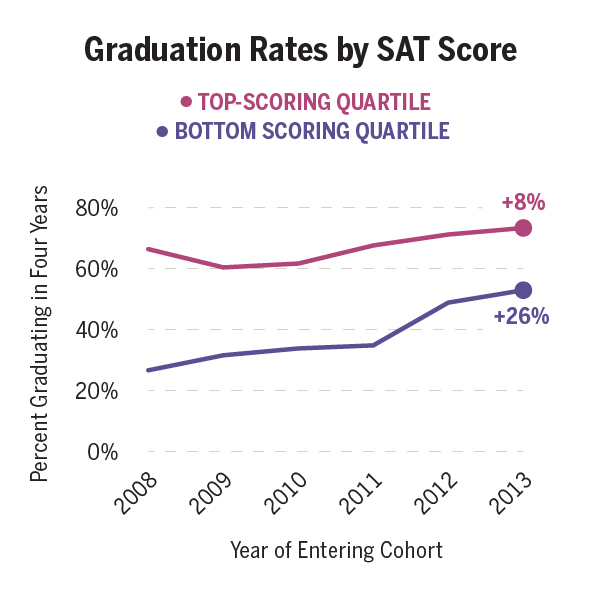
To make improvements, the College's Undergraduate Education Office along with faculty and administrators in the departments looked to build on the success of a handful of promising initiatives, many of them focused on the first year. They also revamped freshman orientation, evaluated the college readiness of incoming students in new ways, changed how many introductory courses were taught and offered increasing numbers of freshmen in the sciences meaningful opportunities to participate in scientific research. By 2016, instead of seeing every tenth student not return for their sophomore year, fewer than 1 out of every 20 students left Natural Sciences. Only 3-4 percent experienced academic probation and scholastic dismissal rates fell to just 1 percent.
"If you set the foundation in the first year, give them a good experience, you retain those students and you are more likely to have them come back in their sophomore year and succeed," said Mike Raney, assistant dean for the College of Natural Sciences. "If they have a really good first year and they are not dropping and failing courses and they are making academic progress toward their degree and having a good experience, they are not wanting to leave the college and they are doing well enough to stay in."
Already top instructors were being enlisted to help teach the freshman introductory classes, the ones students failed the most, and the College built on this strategy, too. Students began to be evaluated online for their readiness for math and science courses, helping to place them in the correct section and helping students understand expectations so they aren't blindsided on the first day of class.
Particularly critical was the expansion of small learning communities. The College had several small learning communities of like-minded students, like the Texas Interdisciplinary Plan Scholars, Women in Natural Sciences, and themed first-year interest groups (FIGs). The change was ensuring every student entering the College of Natural Sciences would be assigned to a "CNS Cornerstone" community–a group of 20-30 students with similar interests who meet regularly their first year on campus. Many of the students wind up in classes together, so in a college of roughly 11,000 undergraduate students, familiar faces can be found in those large introductory courses, like calculus and chemistry.
Pliego recalls feeling like she alone was failing to grasp things in that first biology course—until she started talking to more of her peers in the Biology Scholars Program. That was when she realized she wasn't the only one who was struggling and with help she was able to pull her grade up.
"They gave me some different studying techniques and helped me figure out a schedule," Pliego said. "They told me it was just one exam, and there were ways to pick up my grade. If it hadn't been for that I probably would have stayed in that low place, and it would have gotten worse."
The CNS Cornerstones learning communities also connect first-year students with juniors or seniors, who can serve as peer mentors, and with faculty members. According to a Gallup poll of University of Texas at Austin alumni, the undergraduate experience that most closely predicted whether a student would thrive later in life was having a professor that cared about them as a person. Small learning communities have proven to be a vehicle for this.
Another vehicle for working closely with faculty and with more advanced students is the Freshman Research Initiative. The award-winning initiative launched in 2005 and is now the largest undergraduate research program at a university anywhere in the country, having grown every year to currently serve nearly 1,000 new students annually.
"It's doing a lot for our students as far as growing self-efficacy or confidence in science, developing their science identity, their ability to own a project, lead a project and work as a team," said Stacia Rodenbusch, director of the Freshman Research Initiative. "It's a pretty dramatic impact."
A recent study that carefully matched students who participated in FRI with peers who did not, found that participation in FRI increased the odds a student would graduate by nearly 20 percent. For those that graduated, participating in FRI made them 23 percent more likely to end up with a STEM degree.
"That's similar to what you might see with an intensive four-year scholarship program," Rodenbusch said. She explained that the initiative, by contrast, is simpler, involving only a three-course sequence and a lot of hands-on experience in labs to give students a taste of real-world research. Another peer-reviewed study, which involved a cost-benefit analysis of FRI, concluded the increased future earnings potential for FRI students leads to a positive return on investment for the university.
When Jessica Popoola started in FRI in the fall of 2014, she was majoring in biochemistry and planning to go to medical school. The senior now plans to work in areas of commercializing research, thanks to her experiences in FRI.
"I learned a lot about myself. I am very much capable of doing things I didn't think I could. I also learned that I'm very risk tolerant. FRI was a good sounding board to help me shape my college career path," Popoola said. "I want to work in biotech and industry. I'm mainly focused on the business side of science, of getting what is available out there to everyone."
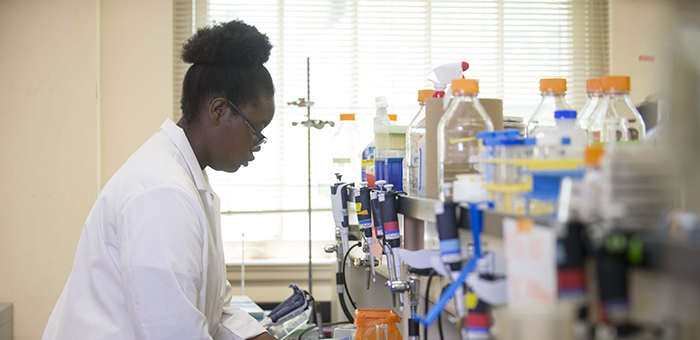
Jessica Popoola, a former Freshman Research Initiative student, working in a lab. Photo by University of Texas at Austin.

Vanden Bout believes doubling down on programs like FRI and CNS Cornerstones has made a difference, setting a foundation helpful to students from any background. The data suggest that these initiatives do work for students from a variety of income brackets, ethnic groups and family experiences. Still, the student success numbers that stand out most involve students from the groups who are most underrepresented traditionally in the sciences – some of whom have seen their graduation rates nearly double in just five years. For example, only about 35 percent of Pell-Grant eligible students who entered the College in 2008 graduated within four years, but last spring, nearly 60 percent of students in this category – those coming from economically challenged households – graduated at the four-year mark. Students who were first in their family to attend college saw similar gains.
Although the College's five-year strategic plan is coming to a close with considerable achievements under its belt for increasing student success, more work lies ahead. The College has already begun work on a new set of 21st Century Undergraduate Education initiatives that put student success at their center, including efforts to restructure curriculum, expand experiential learning, and focus in new ways on teaching.
"I don't know where our retention rate will peak," Vanden Bout said. "Certainly, there are students who come to discover that science is not what they want to do. And that is totally fine. What is important is that it is their choice to switch fields rather than feeling like they just didn't have a chance to succeed and were forced out. I view it as a success if they follow their passion to another college. Not everyone needs to be a scientist. We just want to be sure that everyone has a chance to become a scientist."
Pliego, now a sophomore, mentors freshmen through Biology Scholars and plans to go to medical school after graduating.
"Biology Scholars helped me reach out, and I became more social," she said. "As a mentor, since I struggled as a freshman, I can give them advice and study tips. It's helped me find myself."
This is the first in a series of posts examining recent changes in the College of Natural Sciences.


